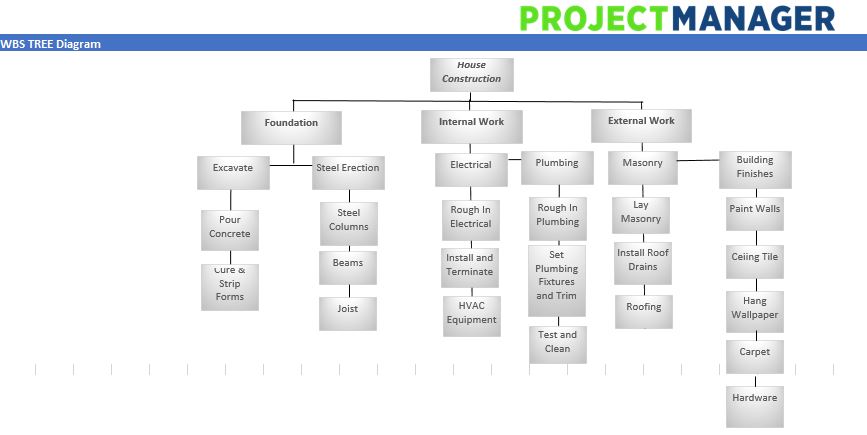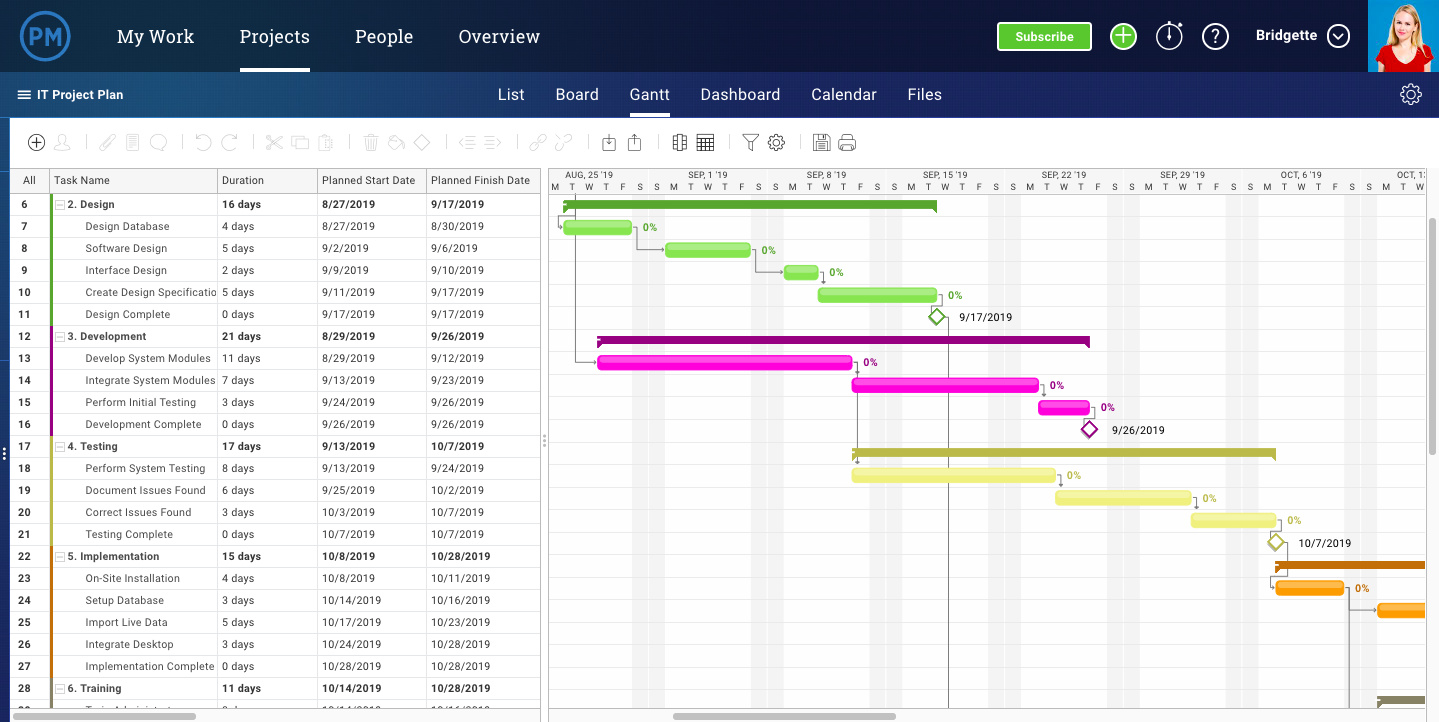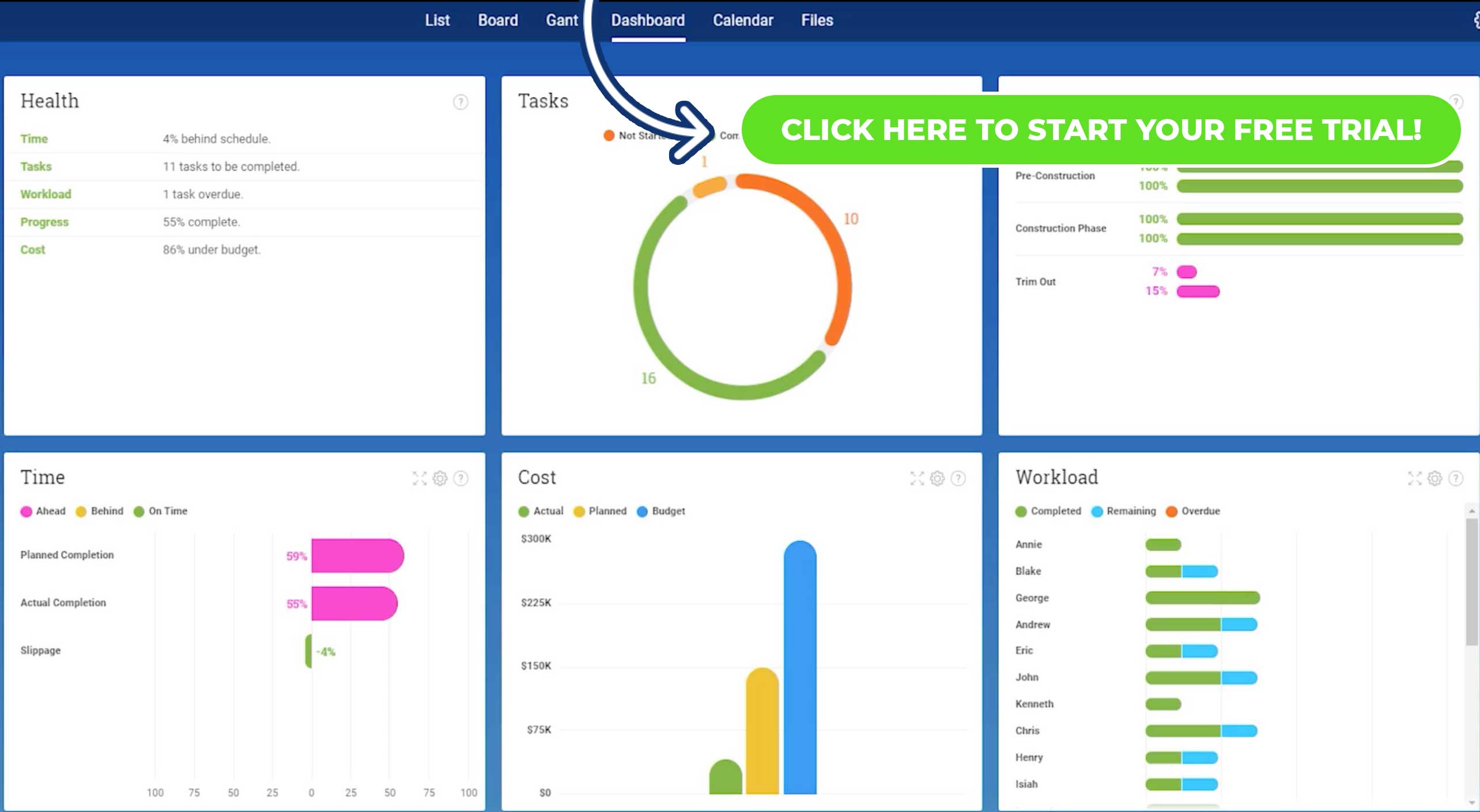What is the project life cycle? It’s everything the project goes through, from inception to close. Each step in the project management life cycle, which consists of distinct phases used in traditional project management, is explained in this post.
The Project Management Life Cycle
For project managers seeking to understand their process and work according to best practices, they are often guided by the PMI standards of practice which outlines the project management life cycle. The life cycle of any project can get confusing. There are a lot of activities going on at different phases of a project. Plus, those phases tend to overlap.
This is where many people might get confused. To clarify, we first need to explain the difference between the delivery process and the project management process.
The delivery process is what your team members are primarily engaged in. Usually, that’s the nuts and bolts of the project in action. That’s distinct from project manager’s process for running a project from start to finish. That’s called the project management life cycle, outlined in PMI’s Project Manager’s Body of Knowledge (PMBOK®).
The Delivery Process in the Project Life Cycle
There are five key phases the team is responsible for as part of their delivery process. They are explained below.
Definition
This is where the project begins for team members. They learn what the project is and what the goal is. Decisions are made to determine who is responsible for what. Teams learn what support they can expect. All of this is delivered by the project manager, who shares the project plan.
Design
The list of requirements collected in the previous phase are now used to make design choices. More than one design might be developed during this phase, which can include dioramas, sketches, flow charts, site trees, prototypes, etc.—depending on the type of project it is. The project manager will choose the final design.
Development
This is the phase in which everything that is needed to implement the project is arranged, be they supplies, subcontractors and more. The project schedule is made at this point, materials are ordered and any tools that are needed are attained. Teams are trained to use any equipment they are unfamiliar with. When all these ducks are in a row, so to speak, and the project is ready to start, and this phase is over.
Deployment
The project is now implemented, whether that be construction or whatever the project entails. Teams are working on their tasks: programmers coding, designers developing material, contractors building and so forth. At the end of this phase, the results are evaluated against the list of requirements, which determines the success of the project.
Departure
The project is now tied up, team members are relinquished of their responsibilities and any follow-up or exit interviews are conducted.
The Project Management Processes in the Project Life Cycle
Then there’s the different phases of work the project manager is doing as part of the project management life cycle process. They are explained below.
Initiation: Developing Project Charter
This is the start of the project for the project manager, who is responsible for defining the project at a high level. This usually begins with a business case, which researches whether the project is feasible and should or should not be undertaken. Stakeholders provide input. If the project is approved, then a project charter is created.
Planning: Creating Project Plan
This is where the roadmap for the project is created. It will be followed by all involved in the project. This phase begins by setting SMART (specific, measurable, attainable, realistic, timely) goals. The scope of the project is defined and a project management plan created, identifying cost, quality, resources and a timetable. Some of the features of this phase include a scope statement, setting of milestones, communication, risk management plans and work breakdown structure.

Executing: Monitoring and Controlling (includes reporting and risks, issues and changes)
Now begins the part of the project that most people think of as the project: developing and completing the deliverables. Some of the tasks that make up this phase is developing the team and assigning resources using key performance indicators, executing the project plan, procurement management, tracking and monitoring progress, status meetings and updates, and revising the schedule and plan as needed.
Closing: User acceptance, final reports, handoffs, etc.
It’s not over until it’s over. Completing the deliverables to the satisfaction of your stakeholders is key, of course, but the project manager must now disassemble the apparatus created to fulfill the project. That means closing out work with contractors, making sure everyone has been paid and that all project documents are signed off on and archived to help with planning future projects. Once all this has been done, the project manager often will have a post mortem with the project team to highlight what worked and what didn’t work, so that successes can be repeated and mistakes avoided.
The project management life cycle is complex, particularly when it overlaps with the different phases of delivery for the team.
ProjectManager.com for Every Phase of Your Project
Every phase of the project requires tools to make the process more effective and efficient. ProjectManager.com is a cloud-based project management software that helps you control your project from initiation through closure.
Our online Gantt chart helps you plan the project, collecting your task list into a timeline. A duration for each task can then be set and each task assigned to a team member. Collaboration happens at the task level on the Gantt chart, where team members can comment and add relevant documents and images. They can even @ those not assigned to the task, and they’ll be notified by email.

The Gantt chart can be viewed as a list, calendar or kanban board. Workflow is visualized by kanban boards, where cards represent the tasks, keeping team members focused on what they’re working on and project managers get a bird’s eye view. Resources can be reallocated and important dates, such as holidays and vacation days, are marked to know who can work when.
One-click reporting gives project managers the data to present to stakeholders on various aspects of the project. These reports can be filtered to show the information you want and allow for deeper dives as necessary. The real-time dashboard shows project metrics in colorful and easy-to-read graphs and charts, giving you the most accurate picture of your project’s progress.

ProjectManager.com allows you to work anytime and anywhere, teams have autonomy to collaborate and project managers have the power to control their project and automate the busy work, freeing them to focus on more important issues. Try ProjectManager.com today with this free 30-day trial.
Watch Our Training Video on the PM Life Cycle
Jennifer Bridges, PMP, is our resident project management expert. She hosts hundreds of our training videos, including this one explaining the project management life cycle.
Thanks for watching!
Transcription
Hello. I’m Jennifer Bridges, Director of ProjectManager.com. Wecome today to our white board session on the project management lifecycle. So we get many from the questions from the forum on this and a lot of people tend to get different life cycles confused on a project, which makes sense, there’s several things going on at one time.
So we want to clarify today the difference between the delivery process and the project management process and who’s doing what. So if we first take the delivery process, the delivery process is what your team members are primarily engaged in and the team members are doing the definition, they’re doing the design, they’re doing the development, deployment and departure of the main parts of the project. So that’s the delivery. Then you are doing the rest of the stuff, so there’s a lot going on for the project manager.
So this is the project management life cycle as documented from the source of the Project Management Body of Knowledge produced by PMI, the Project Management Institute. So if you look on this cross section this is the delivery phase, the project management phase and the trims are the level of activity going on.
So for the delivery of the project you can see it starts and then begins to build and then it tapers off towards the finish,but for the project management they’re doing different things going on so as the delivery process starts the initiating of the project because within initiating remember we have the project charter, which is the main deliverable from initiating so you get the approval and the sign off for the project so it makes sense that that’s here at the start.
So the initiating begins and then at the same time, other activities can also begin as well. So with the planning remember the main deliverable is the project plan so you’re coming up with the process of the schedule, the milestones, all of the main deliverables to be produced in that project.
And so the planning begins throughout the project through the departure and then also the executing, monitoring, and controlling of the project begins so you can see as the delivery starts the executing, monitoring and controlling so what’s going on there so there you are, you as the Project Manager, you’re producing the performance reports for the project, you’re gaging where are we now and where should we be and what are the things that we have to do to control the project to get it back on track.
You’re also managing issue logs, risk logs, change logs and also monitoring the deliverables being produced from the project. And then ultimately it’s the closing. So the closing is at the end, as the departure so the team members begin departing from the project so you’re closing things out. So the main deliverables there are the user acceptance, the approval of the project, any kind of final reports that go out to different team members, the stakeholders, the change control board and the project documents and also the lessons learned.
So just wanted to clarify because again these are some of the questions that come from the forum when clarifying the difference between the project management life cycle and the delivery lifecycle that go hand in hand but remembering these are the things the project manager’s responsible for and this is what you’re gauging for your team members.
So I hope that helps. Again it’s one of the main questions coming from the forum and we at ProjectManager.com have tried to integrate this into our software. So if you need some tips, tools and techniques and better yet software to help you manage your project management lifecycle, then sign up today for our software at ProjectManager.com.
(This post was updated December 2019)
No comments:
Post a Comment